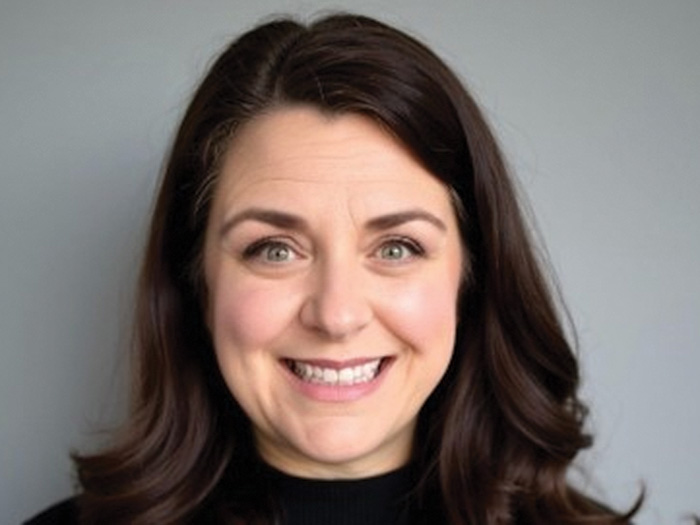Workers’ Comp and COVID: It’s Not Claims We Should Be Worrying About, It’s Premium Amounts

The topic of COVID-19’s effect on industries across the spectrum has been bandied about for months, and the insurance industry is no exception.
During the recent webinar “Pandemic, Premiums and Profit: Is it the Sky That’s Falling or the Floor?,” Joe Paduda, principal at Health Strategy Associates, and Mark Priven, director of data analytics and specialty actuarial at Bickmore Actuarial, discussed the impact COVID-19 is having on the bottom lines of insurance companies.
As Paduda explained, there is tremendous focus on COVID-19 claims and great concern about what COVID-19 could mean from a financial perspective to the workers’ compensation industry — whether it is presumption of loss or how much this could affect losses in the future.
“It’s our contention that folks are focusing on the wrong thing,” Paduda said. “They are focusing on the cost of COVID-19 claims, when in actuality, the focus should be on the decline in premiums, the decline in payroll and the real impact of unemployment on the industry.”
There is heightened concern that we are going from what historically has been a very profitable time in the workers’ compensation industry to an end of profitability.
“There are a lot of COVID-19 claims, and I don’t want to minimize that COVID-19 is real and affecting all of our lives,” Priven said. “It is certainly affecting the workers’ compensation system in terms of injured workers who contract COVID-19 and are filing workers’ comp claims.”
Take, for example, California. In March 2020, there were 2,843 COVID-19 claims in the state. Three months later, in June, that number increased to 10,275 claims.
“Some of those claims are quite costly and are certainly impacting the system. There is a substantial number of COVID-19 claims that are having a real impact on workers, employers and insurance companies,” Priven said.
There are also various industry segments that are experiencing a higher percentage of COVID-19 workers’ comp claims than others. Sticking with California as an example, the health care industry in the state comprises 42.3% of the COVID claims, with retail following at 10.7% and manufacturing with 7.8% though mid-June 2020.
Starting Point: Insurance Profitability
One of the significant issues being discussed within the insurance industry is that COVID-19 could significantly harm insurance profit.
According to Paduda, premium dollars are dropping off along with payroll, and he’s also seen that people are delaying medical care so insurers are not paying out as much for existing claims. What’s more, the claim counts are actually declining.

Joe Paduda, principal, Health Strategy Associates
“Some of that is going to catch up over time, there’s no question about that,” Paduda said.
“But there’s an open question as to whether some of the treatment that would have been delivered is going to eventually be delivered as the health care system catches up. We do not know what the repercussions are going to be, but it seems that in the near terms, insurance profits are going to be okay.”
Here’s why: This is a historically profitable time.
Over the last three years, the worker’s compensation industry has experienced a profit of about 15% to 16% on an underwriting basis. On the part of workers’ compensation investment income, the three-year gain has been about 10%. When you add those two together, we are looking at a margin of about 26%.
“This is a 26% operating gain that the insurance industry is enjoying,” Paduda said.
“The question is ‘How and what would cause an industry to go from a 26% operating gain to a negative number?’ From all the evidence I have seen, COVID-19 is not it,” he said. “It would have to be something far more catastrophic from a profitability perspective that would affect that profit percentage. Is COVID going to have an impact on premiums, payroll and employment? Absolutely. But I don’t see the impact on profits being as negative as it would need to be to return it to a negative profitability level.”
It’s important to note that the profit figures being discussed are on a calendar year basis, which means that part of that 15 % underwriting profit is not just based on new policies written during the year, but also based on older years developing more favorably than expected or drawing down on redundancies and reserves from older years.
“The indication so far, as of the end of this year, is that the insurance industry has about $10 billion in excess reserve adequacy or redundancy,” Priven said. “That means that money is available to be taken into calendar year profits as those older years develop downwards.”
Interest Rates & Investment Income
Another point of concern of those within the insurance industry is the fall of interest rates and that impact on insurance companies’ profitability.
In the last 10 years, higher interest rates have been declining, with sharp declines specifically from 2019 to the middle of 2020.
Insurance companies invest a lot in bonds and government instruments. While interest rates have declined overtime, some insurance companies have seen their investment interest income increase because their stock portfolios have performed relatively well.
“If the interest rate stays low for a relatively long period of time, it could impact insurance companies’ interest income, but so far there is little evidence that it is having an industry-wide effect,” Paduda said.
To illustrate the long-term impact or relationship between government bonds and the investment income the insurance companies have earned, from 1999 to 2018, average insurance investment income was 12.6% whereas the 10-year U.S Treasury average was 3.6%.
“A decline in that government yield is going to have an impact but we are looking at over a 19- or 20-year period. There’s a nice point gain by insurance companies in comparison to the interest rate,” Priven said.
Drop in Non-COVID Claims
For the past seven years, the insurance industry has seen very strong results. When COVID-19 hit, employment went down significantly. Because of this, the number of claims and the percentage of people who were going to get claims declined as well.
For example, in California, we’ve seen a 43% drop from April 2019 to June 2020 of non-COVID claims. Likewise, the state of Florida, for which Priven and Paduda obtained reported data, from April 2019 to June 2020, Florida saw a drop of 45% of non-COVID claims.
“That is going to have a significant impact on workers’ comp insurers from a claim cost perspective and eventually from a premium perspective because they are losing employment,” Paduda said.
“Let’s focus on how COVID-19 is going to affect the entire industry and the financial viability. As we get more hard numbers and data, we will be in a much better place to plan accordingly.” — Mark Priven, director of data analytics and specialty actuarial, Bickmore Actuarial
Due to the high number of layoffs, reduced working hours, one must ask, “How does the decrease in claims relate to the change in payroll?”
“From an insurance company perspective, if claims drop and premiums drop even more, than you don’t have a healthy relationship for profitability,” said Priven.
“Based on looking at the post-COVID period from May to July 2020, data from California indicate that there is about a 13% impact on reduction in workforce, which is a reduction in payroll by 13%; another 12% based on people reducing their working hours; and then a much smaller affect from paid furlough and telecommute, which are 2% and 1%, respectively,” he added.
“So the bottom line is the change in exposure and premium equates to roughly 25%. If we add it all together, the non-COVID claims amount to about 35 to 40% (they actually went down by more but we think ultimately it will be about 35 to 40%), a change in exposures and premiums decreased by about 25 to 30%, so there is a bit of gap of about 10%. So that means there is 10% for insurance companies to pay for COVID-19 claims, or potentially as profit to pay for other costs. But it doesn’t look like the end of the world.”
The Impact of COVID-19 Claims
While COVID-19 claim numbers in California, Florida and other states are growing rapidly, the total number of workers’ comp claims are still way down from where they were in 2019.
What’s more, many COVID claims are being denied. For example, in Florida, as of the end of July 2020, the percentage of claims fully denied is approximately 43.3%; partially denied is 0.3% and not denied is 56.4%. In California, the percent of COVID-19 claims that have been denied has gone from 41% in March 2020 to 15% in June 2020, but those numbers are expected to rise for July and August 2020.
So what are these claims that are not denied going to cost insurers?
As Paduda explained, from a hospitalization perspective, on average the costs of COVID-19 hospitalization charges and costs for all payers, are relatively low. The national averages of the median estimated allowed amount ranged from $21,848 for insureds age 0 to 18 to $17,094 for those over age 70. The highest median estimated allowed amount was $24,012 for those aged 51 to 60. However, these numbers are for January to May and are expected to rise.
Paduda points to a survey of insurers in which one insurer indicated the average cost per COVID-19 claim was $7,800 with another insurer stating that 96% of their COVID-19 claims cost less than $3500, with the remaining 4% being “expensive.”
In thinking about the “big picture,” according to WCIRB Actuarial Committee, the cost of COVID-19 claims in the State of California in 2020 is expected to be $0.7 billion dollars, which includes COVID loss and loss adjusted expense. To make a loss ratio out of that, Paduda estimated the earned premium to be $12 billion. So COVID-19 claims are estimated to be about 6% of earned premium.
“As we mentioned, insurance companies over the last three years have earned an underwriting profit of 15% with an earned investment income of 10 % over the last two years,” Paduda said.
“The rough estimate of cost of COVID-19 in California specifically, is 6% of premium. It doesn’t appear to be the end of the world when you look at the recent profit, investment income and estimated COVID-19 rates in California, for example. One number we can’t factor in is the impact of the declining claims. We don’t know what the financial impact of the 35% reduction of claims is going to have at this time.”
The industry has to acknowledge there are a plethora of unknowns in COVID-19 and the economy. “There is a lot of different ways this can play out,” Paduda said.
“We are simply looking at the data discussed above and this is our estimation. But other factors including the long-term health impact of COVID, cumulative injury claims, employment changes, medical treatment advances, legislation and court cases, and potential waves of COVID, need to be considered.”
Priven added that those in the industry need to focus on the impact of exposure, claims and the premium reductions in the insurance industry.
“Let’s focus on how COVID-19 is going to affect the entire industry and the financial viability. As we get more hard numbers and data, we will be in a much better place to plan accordingly,” Priven said.
“The entities that are going to survive and prosper are going to be the ones who recognize we are in a very different place and adapt to it as best as they can.” &










